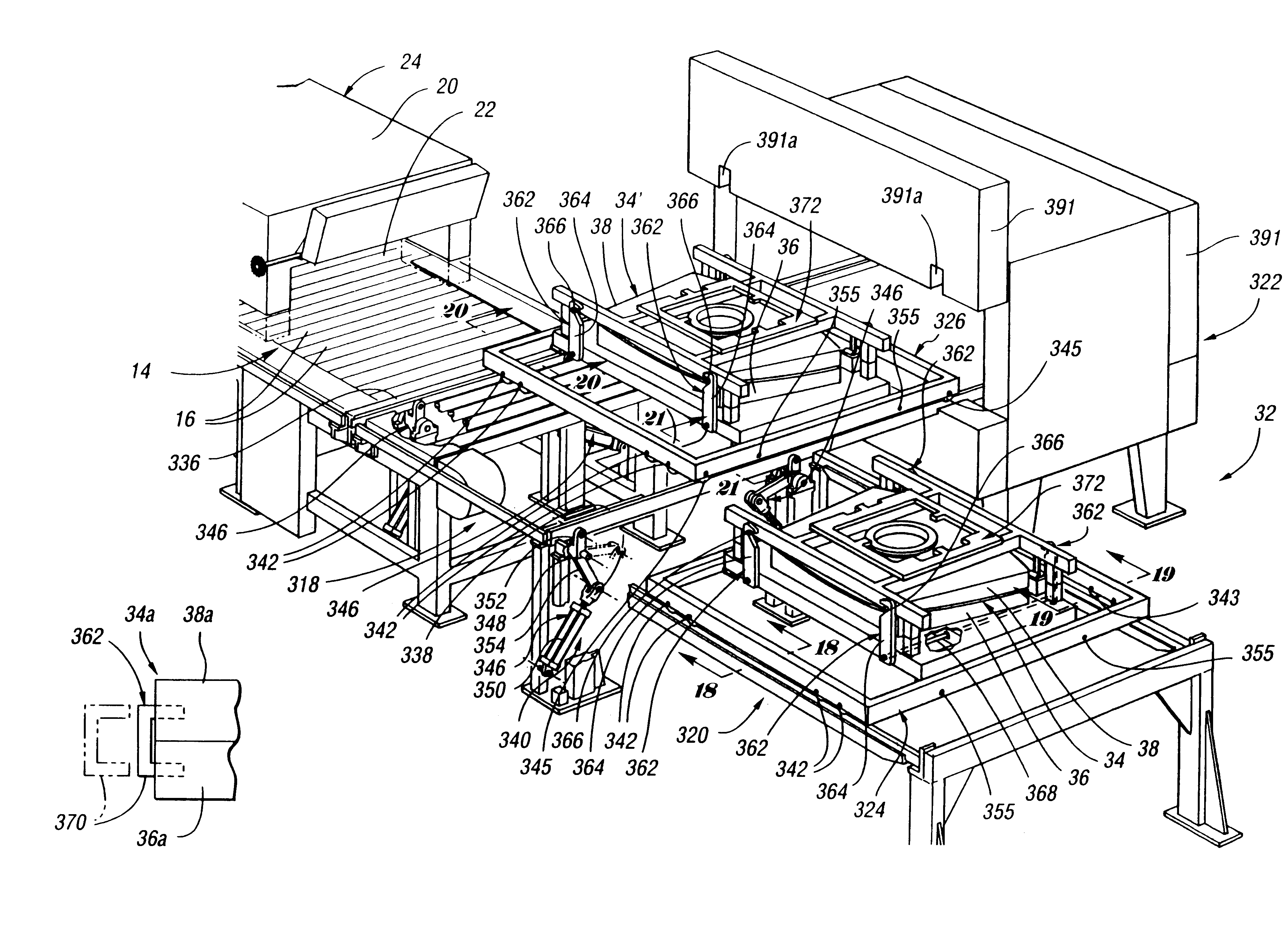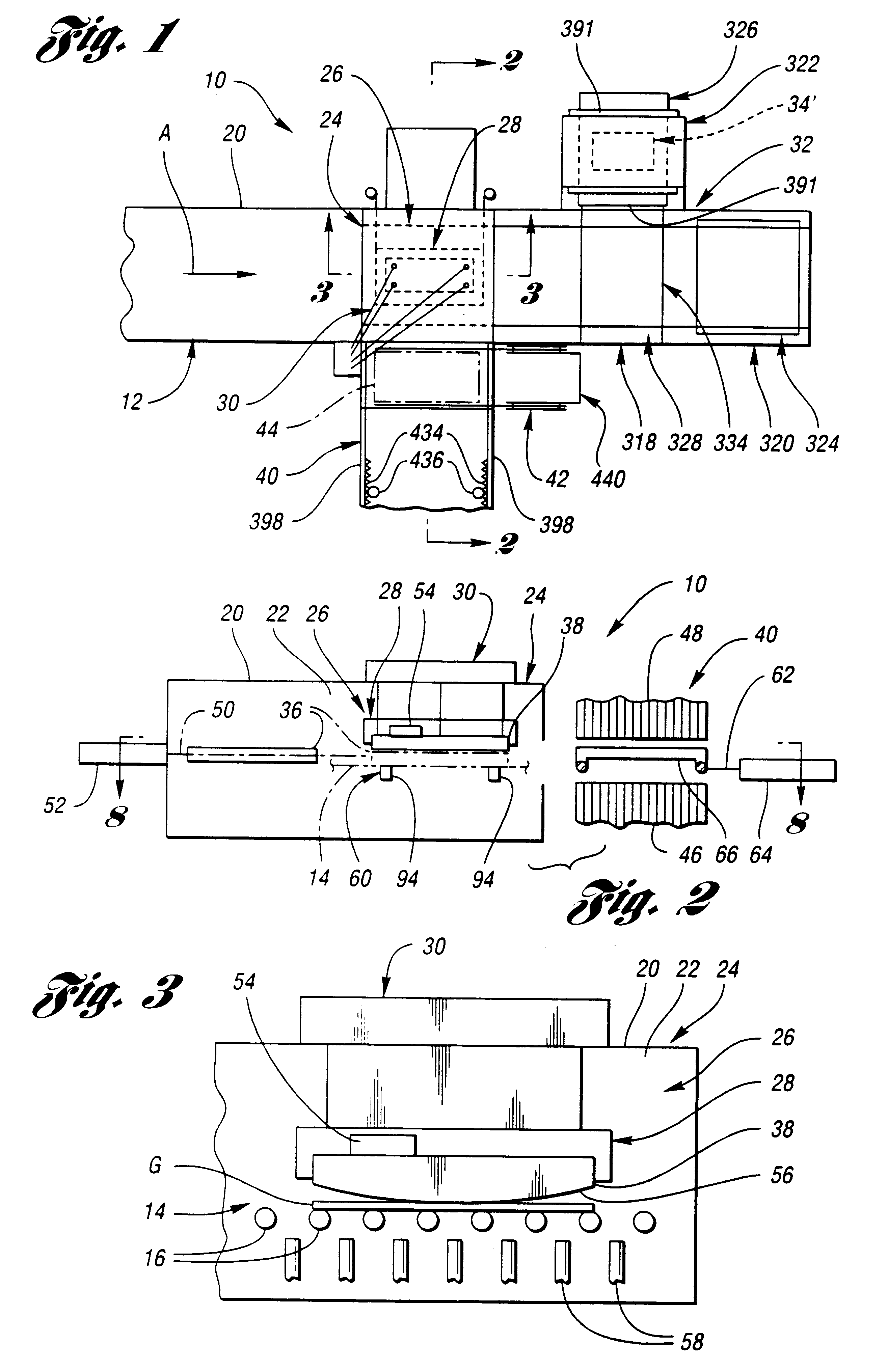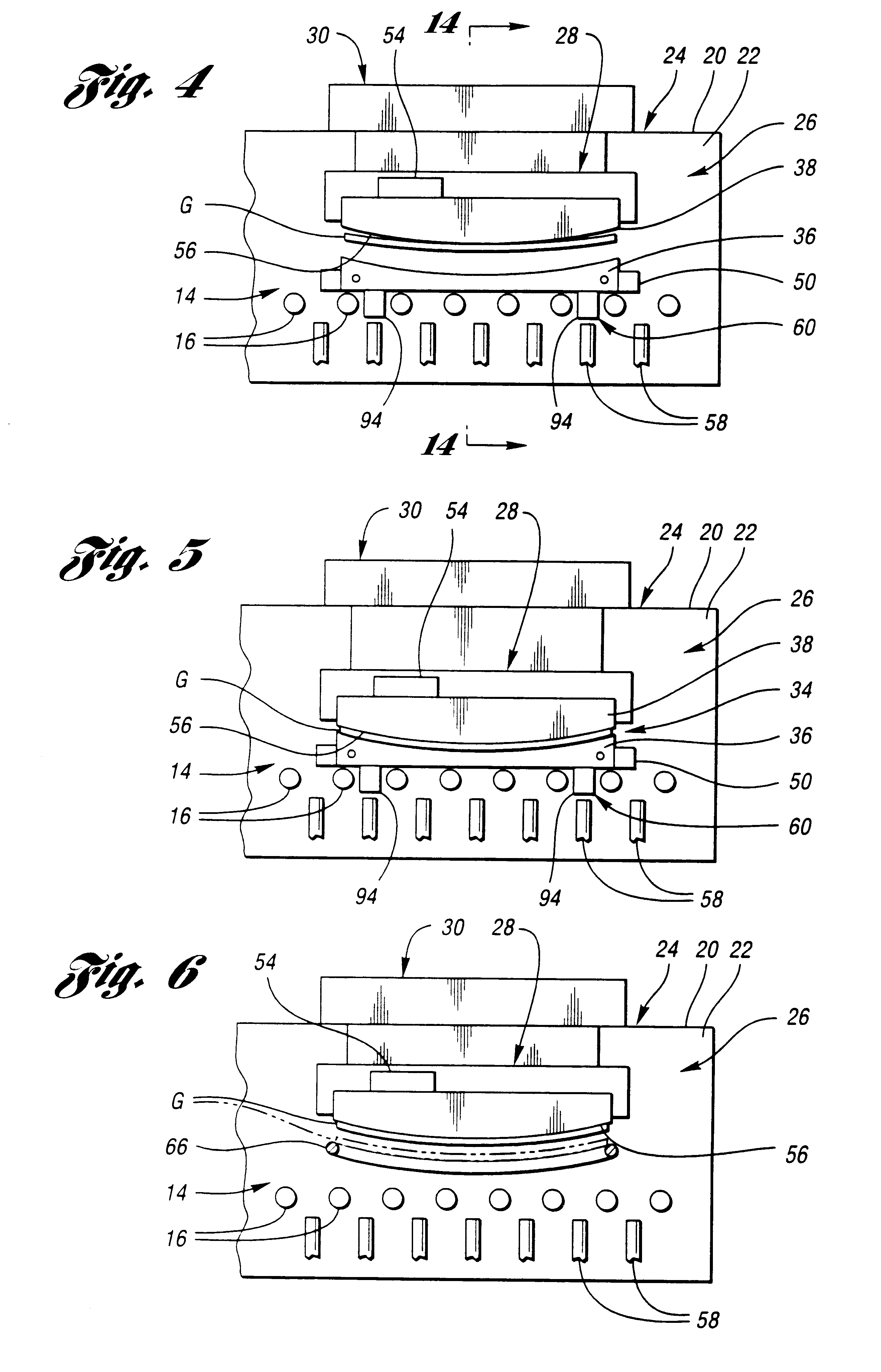Method for installing mold assembly
a mold and assembly technology, applied in glass tempering equipment, glass making equipment, manufacturing tools, etc., can solve the problem of more difficult to change molds between different production runs, and cannot utilize the same molds
- Summary
- Abstract
- Description
- Claims
- Application Information
AI Technical Summary
Benefits of technology
Problems solved by technology
Method used
Image
Examples
Embodiment Construction
With reference to FIG. 1 of the drawings, a glass sheet forming and quench system embodying the invention is generally indicated by 10 and will be summarily described before a detailed description of each station, apparatus, and method of operation utilized to perform the forming and quenching of glass sheets. System 10 includes an elongated furnace 12 in which glass sheets are heated during movement along a primary system axis A, which movement is also referred to as a direction of conveyance through the system. The conveyance within the furnace 12 may be on a roll conveyor 14 that includes rolls 16 as illustrated in FIGS. 2-7. As specifically shown in FIG. 7, the glass sheets are introduced into the system 10 at a loading table 18 for movement into a system housing 20 that defines a heated chamber 22 as shown in FIGS. 2-6.
With continuing reference to FIG. 1, the glass sheets after heating to forming temperature are moved to the right to a forming station 24 that includes apparatus...
PUM
 Login to View More
Login to View More Abstract
Description
Claims
Application Information
 Login to View More
Login to View More - R&D
- Intellectual Property
- Life Sciences
- Materials
- Tech Scout
- Unparalleled Data Quality
- Higher Quality Content
- 60% Fewer Hallucinations
Browse by: Latest US Patents, China's latest patents, Technical Efficacy Thesaurus, Application Domain, Technology Topic, Popular Technical Reports.
© 2025 PatSnap. All rights reserved.Legal|Privacy policy|Modern Slavery Act Transparency Statement|Sitemap|About US| Contact US: help@patsnap.com



